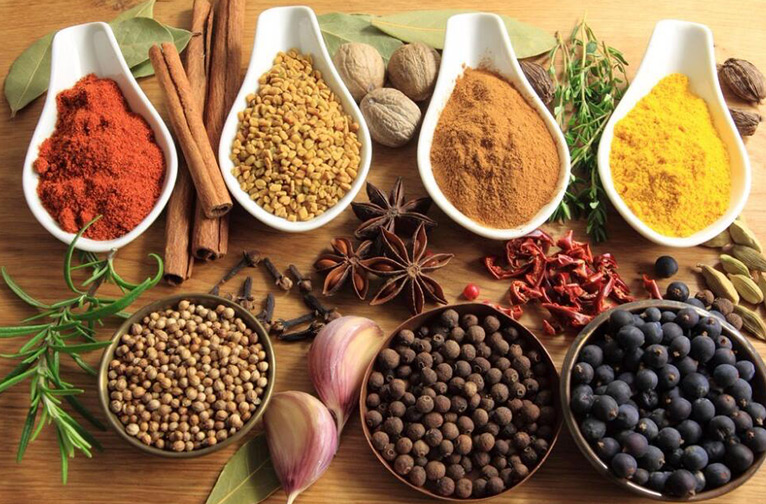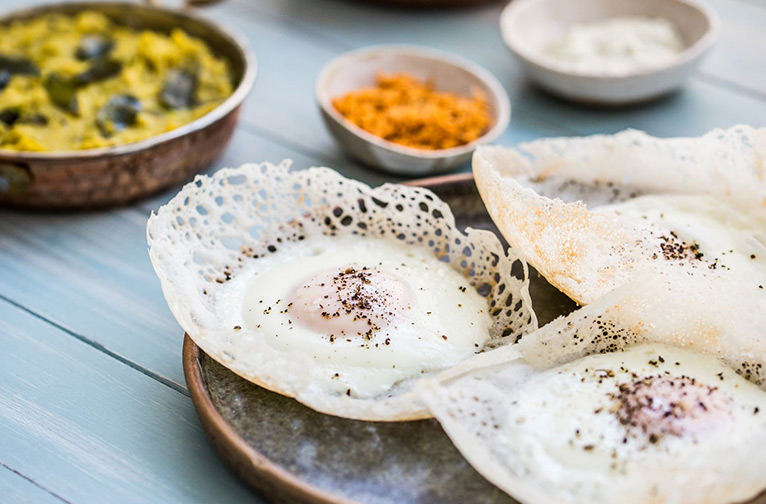The tropical bounty of Sri Lanka has been a great influencer of its culinary persuasions for centuries. That said, there’s no denying that its cross-cultural permutations as a major trading post in the Indian Ocean from ancient times have left an indelible mark on its cuisines across the island. Travels around the island will reveal its deep connections with culinary traditions from neighbour India, Africa, Arabia and Europe.
Colours of Culinary Delights


An excellent exposure to Sri Lanka’s fabulous array of spices and greens comes by spending time in the kitchen of a local hostess who will share many insights into their role in cooking traditions here. Bottles of cardamom, Goroka, fennel seeds, black mustard seeds, black peppercorns, cumin seeds, nutmeg and mace, tamarind, turmeric powder, curry powder, chillies (dried and fresh), cinnamon, cloves, coriander seeds, fenugreek, line the kitchen shelves. The delicious aroma of rice cooking on the stove compels one to help your hostess wash, chop, spice and dish up a yummy curry from the collection of veggies on the kitchen table. Staples at the Sri Lankan table are curry and rice and, of course, vegetables and dhals. Curries here are fiery, the rice bland, making for the perfect mouthful at each tasting. And if you were on the eastern end of the island, your Muslim host would treat you to an aromatic biryani or what we know in India as biryani. The biryani is a legacy from the early Arab merchants who arrived on these shores bringing their own culture and traditions with them to Galle their trading hub.
Cinnamon is Queen
Set out for the southern coastal region of the island to explore the aromatic expanses of a cinnamon plantation. As you step into the portals of the home of your hosts, they will welcome you with a cinnamon infused juice before they lead you on an extensive tour of the estate. You will learn a lot of interesting things about this aromatic spice which is filled with many nutritional and medicinal properties. You will watch how oil can be extracted from this precious woody spice. While watching the women workers nimbly peeling away strips of bark (a very delicate task) they will regale you with stories of the influence of the colonists on the cinnamon trade.
Of hoppers and rotis
Head out for Amabalama, located northwest of Galle, to join your hosts, who will teach you all about hoppers and rotis, Sri Lanka’s kitchen staples. Hoppers are bowl-shaped pancakes made with rice flour and coconut milk. You team these with prawn, pork and cuttlefish curries. They also appear at the breakfast table. They make hoppers from the fermented flour of a certain variety of rice (there are 15 varieties grown in the country). String hoppers are rice noodles! Rotis are simple flatbreads made with freshly grated coconut, flour, water and salt and cooked on a hot griddle; it’s also eaten with curries. Rotis can also feature fillings of different ingredients like a layered paratha.
It’s easy to confuse some of Sri Lanka’s staple dishes with those of India. But remember, there’s always a native twist which distinguishes them from their neighbour. So we recommend you sample a few and figure out the differences for yourself. It can be lots of fun!!!